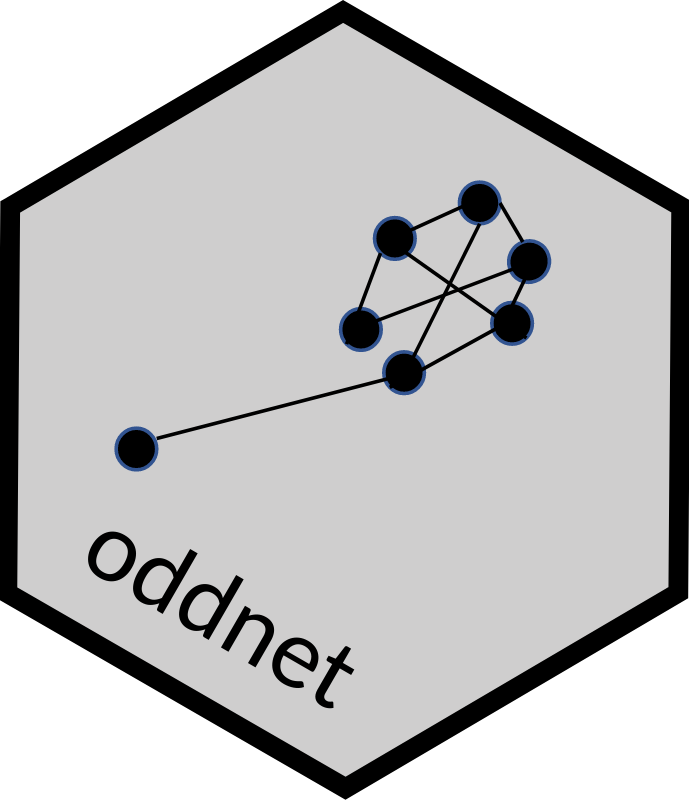Description
Anomaly Detection in Temporal Networks.
Description
Anomaly detection in dynamic, temporal networks. The package 'oddnet' uses a feature-based method to identify anomalies. First, it computes many features for each network. Then it models the features using time series methods. Using time series residuals it detects anomalies. This way, the temporal dependencies are accounted for when identifying anomalies (Kandanaarachchi, Hyndman 2022) <arXiv:2210.07407>.
README.md
oddnet 
The goal of oddnet is to identify anomalous networks from a series of temporal networks.
Installation
You can install the development version of oddnet from GitHub with:
# install.packages("devtools")
# devtools::install_github("sevvandi/oddnet")
Example
In this example we generate a series of networks and add an anomalous network at location 50.
library(oddnet)
library(igraph)
#>
#> Attaching package: 'igraph'
#> The following objects are masked from 'package:stats':
#>
#> decompose, spectrum
#> The following object is masked from 'package:base':
#>
#> union
set.seed(1)
networks <- list()
p.or.m.seq <- rep(0.05, 100)
p.or.m.seq[50] <- 0.2 # outlying network at 50
for(i in 1:100){
gr <- igraph::erdos.renyi.game(100, p.or.m = p.or.m.seq[i])
networks[[i]] <- igraph::as_adjacency_matrix(gr)
}
anom <- anomalous_networks(networks)
anom
#> Leave-out-out KDE outliers using lookout algorithm
#>
#> Call: lookout::lookout(X = dfpca[, 1:dd], alpha = alpha)
#>
#> Outliers Probability
#> 1 50 0